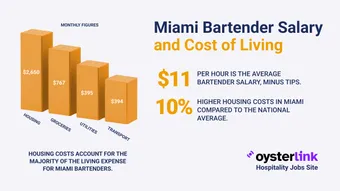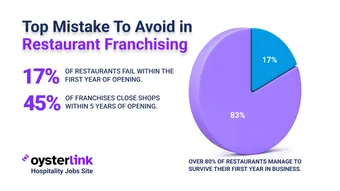Understanding the cost of living in Maine is crucial for residents, potential movers, and investors. This comprehensive guide delves into various expenses, including housing, transportation, healthcare, and more, offering insights into the Pine Tree State's economic landscape in 2025.
1. Overview of Maine's Cost of Living
Maine's cost of living is slightly above the national average. In 2025, the average annual cost of living in Maine is just over $50,000, making it one of the more expensive states to live in. Source
1.1 Comparison with National Averages
While Maine's cost of living is higher than the national average, it remains the lowest in New England, offering a more affordable option within the region. Source
2. Housing Costs
Housing is a significant contributor to Maine's cost of living. The median home price in 2019 was $222,700, reflecting an increase from 2018's median of $204,800. Source
2.1 Rental Market Trends
Rental prices have also seen an upward trend. In March 2024, the average rent price in Maine was $1,631, marking a $32 increase from the previous month. Source
2.2 Fair Market Rent Projections for 2025
For 2025, the Fair Market Rent (FMR) for a one-bedroom apartment in Maine is projected to be $1,146 per month. Source
3. Transportation Expenses
Transportation costs in Maine are influenced by factors such as fuel prices, vehicle maintenance, and public transit availability. Gasoline prices in Maine are usually higher than neighboring states, contributing to increased transportation expenses. Source
3.1 Vehicle Ownership Costs
Owning a vehicle in Maine entails costs like insurance, maintenance, and registration fees. These expenses can add up, making transportation a notable component of the overall cost of living.
3.2 Public Transportation Availability
Maine's public transportation options are limited, especially in rural areas, leading many residents to rely on personal vehicles. This reliance can increase individual transportation costs.
4. Healthcare Costs
Healthcare expenses in Maine have been on the rise, influenced by factors such as provider availability and service demand. Residents have reported challenges accessing healthcare services, including long wait times for primary care and specialist appointments. Source
4.1 Insurance Premiums
Health insurance premiums in Maine vary based on coverage levels and providers. Residents should explore different plans to find options that balance cost and coverage effectively.
4.2 Access to Medical Services
Access to medical services, particularly specialized care, can be limited in Maine, especially in rural areas. This limitation may necessitate traveling to neighboring states for certain medical services, adding to healthcare-related expenses.
5. Utility Costs
Utility expenses, including electricity, heating, water, and internet services, contribute to the overall cost of living in Maine. The state's cold winters can lead to higher heating costs, impacting annual utility expenses.
5.1 Electricity and Heating
Maine's electricity rates are competitive, but heating costs can be substantial due to the state's climate. Residents often rely on oil, propane, or electric heating systems, each with varying costs.
5.2 Internet and Communication Services
Internet and communication service costs in Maine are comparable to national averages. However, service availability and quality can vary, particularly in remote areas.
6. Grocery and Food Expenses
Grocery prices in Maine are on average 5% more expensive than the rest of the nation. Source
6.1 Average Grocery Prices
Staple items such as dairy products, meats, and fresh produce may have higher prices compared to other states, contributing to increased grocery expenses.
6.2 Dining Out Costs
Dining out in Maine can be relatively affordable, with a range of options from casual eateries to fine dining establishments. Prices vary depending on the location and type of cuisine.
7. Education Expenses
Education costs in Maine encompass public and private schooling, as well as higher education tuition fees. These expenses can significantly impact the budgets of families with school-aged children.
7.1 Public and Private Schooling
Public schools in Maine are funded through state and local taxes, offering tuition-free education. Private school tuition varies widely, depending on the institution and level of education.
7.2 Higher Education Tuition
Maine's public universities and colleges offer in-state tuition rates that are generally lower than private institutions. However, tuition costs have been rising, reflecting national trends.
8. Taxation in Maine
Maine's tax structure includes income, property, and sales taxes, all of which contribute to the overall cost of living. Understanding these tax obligations is essential for residents and potential movers.
8.1 Income Tax
Maine has a progressive income tax system with rates ranging from 5.8% to 7.15%, depending on income levels. These rates are higher than the national average, impacting take-home pay.
8.2 Property Tax
The state has a high cost of living, with the median home price in 2019 reaching $222,700. This is an increase from 2018's median of $204,800, making Maine one of the most expensive states for housing. Source
8.3 Sales Tax
Maine imposes a 5.5% sales tax on most goods and services, which is relatively low compared to other states. However, Maine does not have local sales taxes, which helps keep consumer costs more predictable.
9. Employment and Income Trends
As of 2025, Maine’s job market remains stable, with an unemployment rate of approximately 4.2%. The median household income in Maine is around $63,000, which aligns with national averages but may not always cover higher living expenses in certain areas. Source
9.1 High-Demand Job Sectors
Maine's key industries include healthcare, tourism, forestry, and technology. Healthcare remains the largest employer in the state, while tourism-related jobs see seasonal fluctuations.
9.2 Wage Growth and Inflation
Wage growth in Maine has been moderate, but inflation continues to impact purchasing power. Despite minimum wage increases, the rising costs of goods and services make it challenging for some residents to maintain their standard of living.
10. Regional Differences in Cost of Living
The cost of living in Maine varies significantly by location. Urban areas tend to have higher housing and transportation costs, while rural areas offer more affordable housing but may lack accessibility to certain amenities.
10.1 Portland vs. Bangor vs. Rural Maine
- Portland: Higher housing costs, strong job market, vibrant cultural scene.
- Bangor: More affordable housing, growing economy, lower transportation expenses.
- Rural Maine: Significantly lower housing costs, but limited access to healthcare and employment opportunities.
11. Future Cost of Living Projections
Experts predict Maine’s cost of living will continue to rise due to inflation, supply chain issues, and housing demand. Real estate values are expected to increase modestly, and utility costs may rise due to energy market fluctuations.
12. Quick Takeaways
- Maine's cost of living is higher than the national average but remains the lowest in New England.
- Housing costs have steadily increased, with the median home price exceeding $222,700.
- Grocery prices are about 5% higher than the national average.
- Healthcare costs continue to rise, with limited access in some rural areas.
- Maine has a progressive income tax system, with rates between 5.8% and 7.15%.
- Employment remains stable, but wage growth is slow compared to rising inflation.
13. Conclusion
Living in Maine offers a mix of affordability and higher-than-average costs, particularly in housing and healthcare. While the state provides natural beauty, low crime rates, and a slower pace of life, it also presents financial challenges. Those considering a move to Maine should carefully assess their budget, job prospects, and access to essential services before making the transition.




